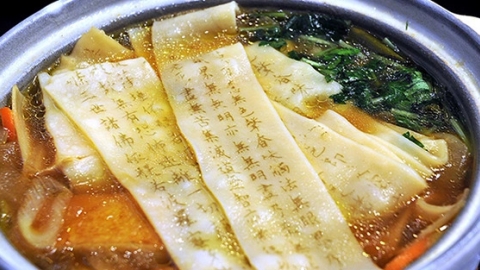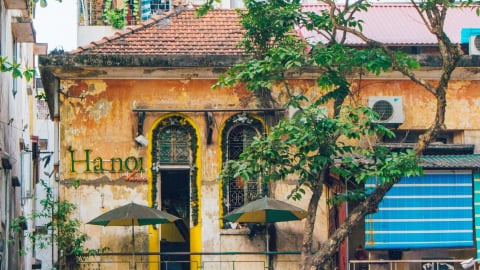Contemporary cuisine
Thao Dien area has been planned and emerged thanks to high-end real estate projects and naturally competes for the title "rich area" with Phu My Hung (District 7).
According to statistics from the Ho Chi Minh City Real Estate Association (HoREA) in 2019, Thao Dien has nearly 6,000 foreigners with 102 nationalities, more than half of whom are Europeans and Americans. So it is not surprising that most of the restaurants here mainly serve Western-style dishes.
But Thao Dien is not only home to foreign guests, it also has Vietnamese families living there. This makes me wonder, if serving Vietnamese food in Thao Dien, how do chefs manage to please the extremely diverse customer base here.
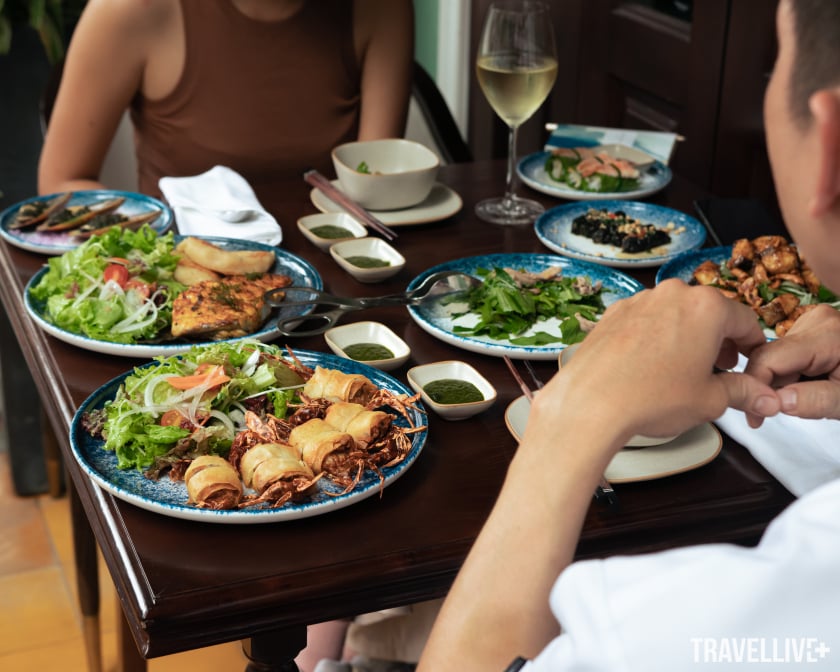
The space, the food and the stories behind them are part of the elements that create the culinary style.
Fate brought me to meet Chef Nguyen Nhu Cuong. Before owning a Vietnamese restaurant under his own management, Chef Cuong had nearly 15 years of experience in the kitchen and won many outstanding awards.
Chef Cuong's restaurant is located in a convenient location that attracts diners. With modern Indochinese architectural style and emerald green as the main color, it is not difficult to recognize this as a rare Vietnamese restaurant in Thao Dien.
However, the restaurant's menu is not purely Vietnamese dishes such as "sour soup" or "cow stewed in clay pot", but rather dishes that "sound very Vietnamese but are not Vietnamese" such as "soft-skinned crab spring rolls", "duck salad with wild vegetables", "shaken sturgeon", "grilled sea bass with betel leaves"... I am very confused with the culinary style of "fusion cuisine", but if it is fusion, where are the remaining culinary cultural elements in these dishes that sound very Vietnamese but are not purely Vietnamese?

Chef Cuong is preparing the food himself.
While I was still struggling with the menu pages, at that time I was still unsure about the restaurant's culinary style, Chef Cuong suggested some dishes to me and became a "tour guide", taking me on a culinary "tour".
But before entering the "tour", Chef Cuong introduced to me that the dishes in the menu I was holding in my hand were designed in the style of "contemporary cuisine".
Unlike "fusion cuisine" which is a school of harmonizing and combining the typical culinary styles of different countries, especially in terms of taste and cooking methods, "contemporary cuisine" as explained by Travellive (article "Contemporary Cuisine" published on August 3, 2013) is a style that distills the best of the host country's cuisine, combined with cooking techniques and presentation styles with international influences.
Distilling the essence
Diversity in nature is the ideal condition for chefs to freely create with Vietnamese cuisine. Surely, at least once we have heard of a strange "variation" of Pho that sounds strange, looks strange, even tastes strange. And the Vietnamese people, with an open mind, still warmly welcome creativity based on the foundation of cultural respect.
However, there are not many creations that leave a truly deep impression and last over time. Because, in every Vietnamese person is a great Vietnamese chef. They can completely serve a delicious dish for themselves or their family. Therefore, the biggest headache for Vietnamese restaurants is sometimes not to please foreign customers but Vietnamese diners.
Chef Cuong took me on a "tour" with 4 dishes: "duck salad", "soft-shell crab spring rolls", "shaken sturgeon" and "grilled sea bass with betel leaves". At first glance, you can see the Vietnamese character of these dishes in the words "salad", "spring rolls", "shaken" or "betel leaves", but these are not famous dishes or represent any region in Vietnam.
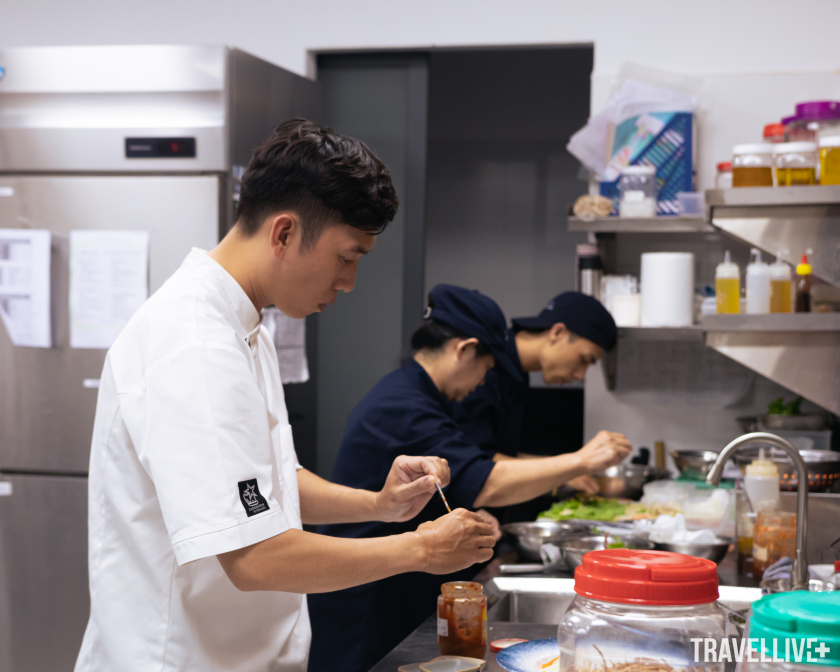
"Serving Vietnamese food to Vietnamese people is a very difficult challenge, but any Vietnamese chef wants to try it.", Chef Nguyen Nhu Cuong
"I want diners, both foreigners and Vietnamese, to be able to enjoy Vietnamese food without being overwhelmed by the cultural differences," Chef Cuong shared when talking about his target audience. The focus of these dishes is cultural balance and exploiting the quintessence of culinary culture. So, where does that quintessence come from?
For example, salad is considered an appetizer in a Vietnamese meal, because of its “pleasant” nature, easily combined with many types of ingredients, even on the banquet table, on important occasions or in rustic meals, salad also occupies an irreplaceable position. Salad appears in every region of the country, from North to South. In each region, Vietnamese people have their own way of preparing salad, depending on the available ingredients there. Unlike salad in the West, which is characterized by vegetables and sauces, salad perfectly blends vegetables with meat and sauces.

Duck dish is made from very simple ingredients.
The "duck salad" dish that I enjoyed has a very simple name and it is easy to imagine that it is made from duck meat, but to combine it with Tay Ninh wild vegetables, a rare vegetable in Vietnamese meals is the novelty of this dish. Compared to Gia Lai wild vegetables with a sweet, fresh taste, Tay Ninh wild vegetables have a little bit of astringency in the sweet, cool aroma, combined with soft processed duck meat and a little sweet and sour sauce poured in, this is a very suitable appetizer in the hot weather of Saigon.
Another dish that I find very interesting is "grilled sea bass with betel leaves". For Vietnamese people, betel leaves are not a strange ingredient, but to apply them to a dish is a rare thing. The betel leaves in this dish are stuffed inside the sea bass and grilled, thanks to which the aroma of the betel leaves will spread in every fiber of the fish. Betel leaves have a strong aroma, very suitable as an ingredient to remove the fishy smell of fish. In particular, this dish is served with mashed cassava soaked in coconut milk.
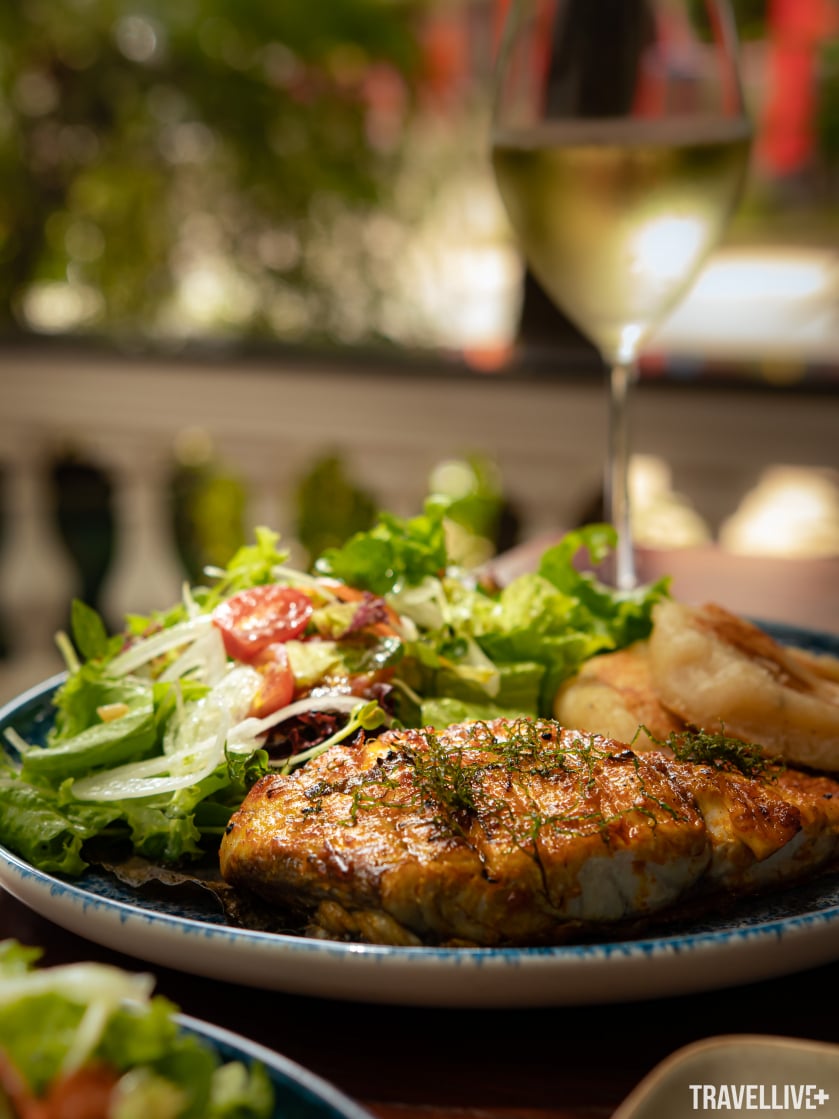
Grilled sea bass with betel leaves

In terms of appearance, this dish is quite similar to Western steak dishes with grilled meat served with salad and mashed potatoes. But in detail, all of these ingredients are purely Vietnamese. Interestingly, when Western diners enjoy this dish, they seem to like and are curious about grilled cassava, to the point that some people even ask if they can order cassava separately.
The following dishes are also products based on Chef Cuong's "playing around" with purely Vietnamese ingredients. Therefore, it can be seen that the main ingredients are the soul of dishes imbued with the culture of a country or territory.
Mr. Minh (District 8), a customer of the restaurant, expressed his opinion: "I have tried Vietnamese food in many countries. Even if they cook it properly, the taste is not the same as when I eat it in Vietnam. I believe that foreigners also feel the same way when eating their food in other countries."
When asked whether simply adding Vietnamese ingredients to any dish and giving it a truly Vietnamese name can be called contemporary cuisine, Chef Cuong smiled and shared: "Diners today are very sophisticated eaters, so professionals like us cannot be so 'sly'. What we serve to our diners are dishes that have been tested many times and gained through many years of experience."

Vietnamese dishes are served with wine.
I myself am Vietnamese and grew up with pure Vietnamese meals. More than anyone else, I and the readers of this article understand that the story of Vietnamese cuisine is an eternal story. It is a part of Vietnamese culture. Along with the development of society, we accept new things, changes in lifestyle, people and cuisine are also more or less affected.
New culinary trends such as fusion cuisine or contemporary cuisine are born as a strong statement to the world about the development of culinary culture in general and Vietnamese cuisine in particular. I think this is a good sign for the development of our country's culinary culture, and to best absorb this development, we ourselves need to equip ourselves with a certain understanding and an open mind.


























